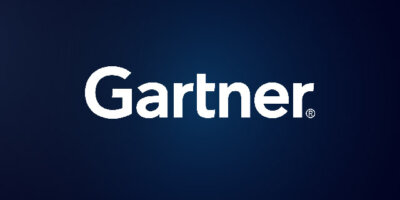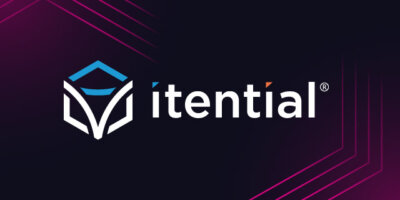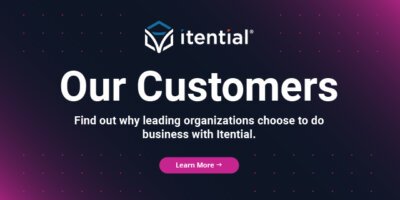Overview
Modern infrastructure demands orchestration that goes beyond isolated automations. As networks, clouds, compute, and security converge, organizations need a unified platform capable of coordinating across domains, controlling lifecycle, integrating AI/agents, and enforcing trust and governance. This guide outlines what capabilities matter, the questions to ask, and how Itential delivers on those requirements in real deployments.
What Is Network & Infrastructure Orchestration?
Orchestration is the automated coordination and management of many interdependent tasks and systems into a controlled workflow that achieves an end-to-end outcome across domains (network, cloud, security). It goes beyond single-task automation by enforcing order, dependencies, error handling, and policy so the whole change process is reliable and repeatable.
Gartner characterizes Infrastructure Automation & Orchestration (IA&O) tools as platforms that let I&O teams design and implement reusable infrastructure services across hybrid environments (on-prem, edge, public and private cloud) with emphases on self-service access, operational efficiency/quality, policy compliance and risk mitigation, and cost/process optimization.
The Lifecycle Stages of Orchestration
A mature orchestration platform should support all these lifecycle stages in an integrated flow:
01 Request / Intake / Initiation
Triggered via UI, API, tickets, telemetry, or AI/agents
Validate inputs and enrich with context.02 Approval / Policy / Impact Analysis
Apply checks: security, capacity, dependencies, windows
Route for human or automated approval03 Provisioning / Activation
Create network, compute, storage, connectivity
Tie dependencies, label, update inventories04 Change / Update / Modification
Execute patches, scaling, config changes
Join multiple domain changes with pre/post validations and rollback paths05 Validation & Drift Detection
Verify actual vs intended state
Detect and remediate out-of-band changes06 Ongoing Management/Day-N Operations
Monitor health, usage, capacity trends
Trigger remediations or adjustments07 Decommissioning / Teardown / Retirement
Safely disable or remove resources
Clean up dependencies, revert policies08 Audit, History & Traceability
Log every change, with identity, version, timestamp
Maintain historical state per instance for traceability, rollback, review
Core Capabilities of Orchestration Platforms

Expose
Expose workflows to users, APIs, event streams, or AI/agent triggers.
Enhance
Integrate with telemetry, sources of truth, policy engines, and existing automations.

Extend
Scale beyond network to cloud, compute, security, edge, container domains.

Observe & Lifecycle
Track instance state, detect drift, support rollback, snapshots, versioning.

Govern & Secure
Enforce RBAC, SSO, audit trails, secret/credential management, encryption, AI guardrails.
These are not optional extras – they are the difference between one-off automation and a sustainable, scalable orchestration platform.
12 Pillars of Modern Orchestration:
What to Demand & How Itential Delivers
A holistic guide to evaluating orchestration platforms – covering lifecycle, AI, governance, cross-domain reach, and the core differentiators that set Itential apart.

01 Domain Breadth & Cross-Domain Workflows
Why It Matters
Your orchestration should seamlessly span across network, cloud, compute, security, containers, and edge. If it’s limited to one domain (e.g. only network devices), it creates gaps, handoffs, and operational tension. Real workflows routinely require orchestrating dependencies across domains.
Questions to Ask
- Does a single workflow support changes across network, cloud, and security domains?
- Are cross-domain dependencies, locking, rollback, and sequencing handled natively?
- How easy is it to onboard a new domain (e.g. storage, edge, service mesh)?
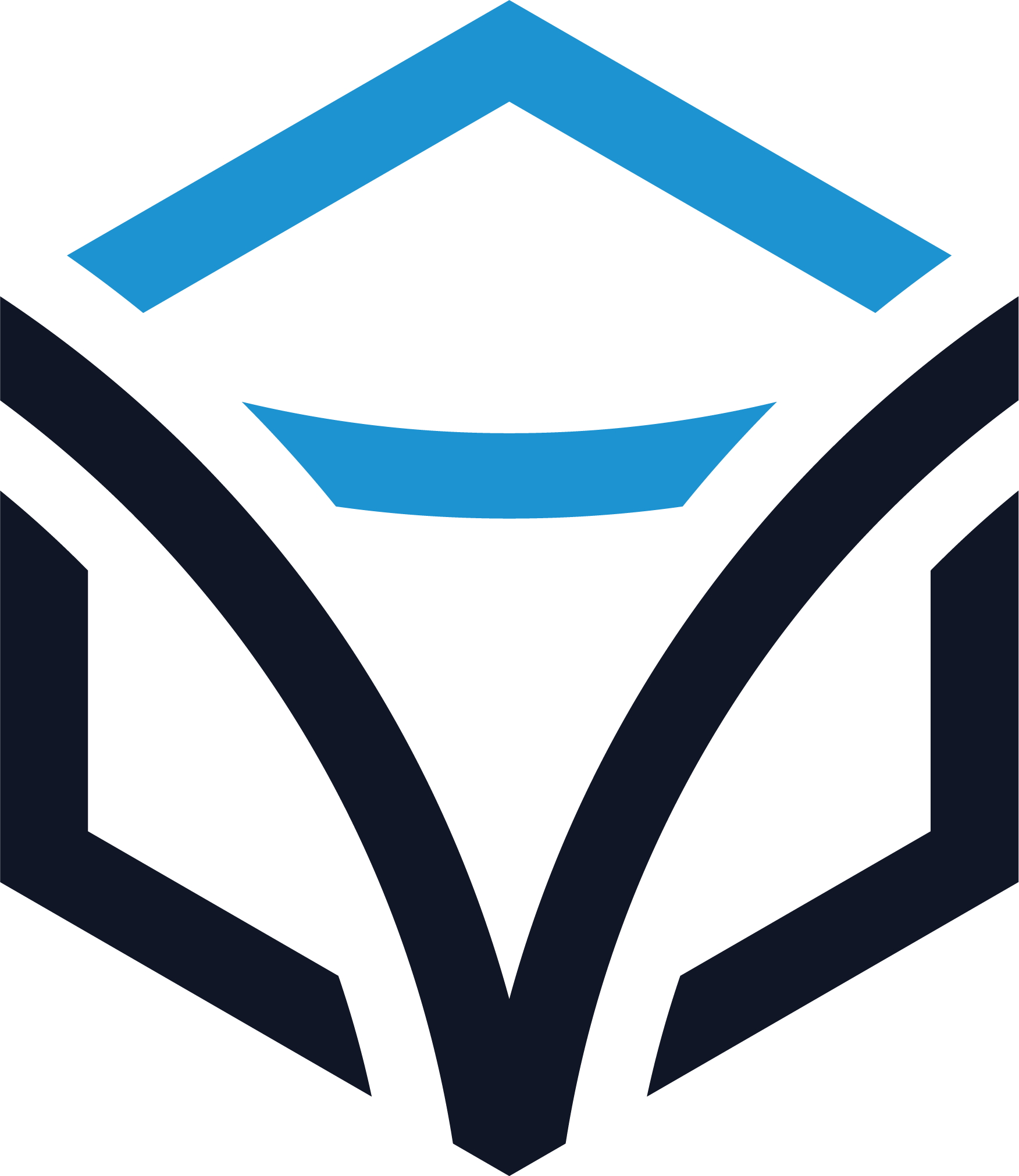 Itential Differentiator
Itential Differentiator
Itential’s orchestration engine is built to manage multi-domain flows from day one. Its adapter framework lets you bring in new infrastructure domains without rewriting orchestration logic. It treats networking, compute, security, and cloud as first-class domains under unified control.
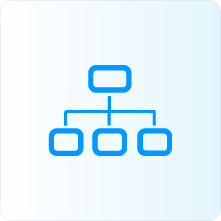
02 Distributed Infrastructure Supports
Why It Matters
Modern infrastructure is rarely centralized. It spans data centers, public and private clouds, and remote or edge sites. A robust orchestration platform must manage all these in a coordinated, resilient manner.
Questions to Ask
- Can the platform reach and operate over edge or remote locations reliably?
- Does it support hybrid or disconnected environments with fallback or local execution agents?
- How does it treat data locality, latency, or disconnection risk?
 Itential Differentiator
Itential Differentiator
Itential supports federated orchestration, enabling you to deploy agents or proxies at remote locations (edge, branch, regional data centers) that continue to run workflows autonomously when needed. When connectivity returns, Itential reconciles state, aligns with the central model, and ensures coherence across the full infrastructure fabric. This approach ensures consistent orchestration regardless of distribution, connectivity variability, or regulatory boundaries.
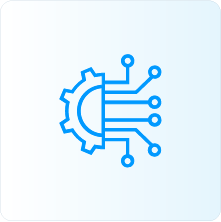
03 Integration & Extensibility
Why It Matters
Orchestration is only as powerful as its integrations. You need tight connectivity with ITSM, CMDB/SoT, observability, identity, IaC, APIs, and custom systems. Flexible, maintainable integrations reduce friction and tech debt.
Questions to Ask
- What prebuilt connectors or adapters are included?
- How easy is it to build and maintain custom integrations?
- Can workflows ingest, transform, and emit data bi-directionally with external systems?
 Itential Differentiator
Itential Differentiator
Itential offers a robust integration framework. Its API-first approach and extensible architecture let you build your own custom integration or easily connect to new systems – telemetry, ITSM, cloud providers, proprietary APIs without reworking core logic.

04 Lifecycle & Stateful Orchestration
Why It Matters
Infrastructure and services evolve. You must model, track, and manage them through creation, updates, validation, drift detection, remediation, and retirement—not just one-off changes. This is how automation becomes sustainable.
Questions to Ask
- Does the platform maintain a state model (instance, metadata, dependencies) per service?
- Can it detect drift (out-of-band changes) and reconcile automatically or with alerts?
- Are snapshots, rollbacks, and version histories supported?
- Can you view change history over time (who changed what when)?
 Itential Differentiator
Itential Differentiator
Itential’s Lifecycle Manager (LCM) enables true stateful orchestration: define resources via JSON Schema, manage instance state over time, and tie actions (create, update, delete) to workflows. LCM also supports viewing the history of property changes on instances, showing what changed, when, and by which action.
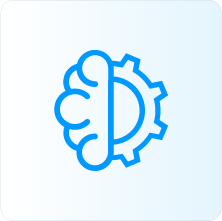
05 AI & Agentic Orchestration
Why It Matters
AI agents, LLMs, and intelligent triggers are emerging as essential automation actors. But without governance, they can introduce errors or security gaps. Orchestration must mediate AI intent through policy, validation, and audit.
Questions to Ask
- Can AI/agents propose workflows that are validated, gated, and audited before execution?
- Are AI-driven changes reversible, logged, and traceable?
- Can AI triggers integrate mid-workflow (e.g. anomaly detection that adjusts config) safely?
 Itential Differentiator
Itential Differentiator
Itential’s MCP Server is designed to bridge AI agents and the orchestration platform securely. Every proposed action from an AI agent or LLM is routed through policy-enforced workflows, validations, and approvals. This approach ensures AI does not bypass governance but still participates in orchestration. Additionally, Itential and MCP can normalize data from CLI, APIs, or AI inputs into compliant workflows.

06 Self-Service & Platform Engineering
Why It Matters
You need to democratize infrastructure: expose curated services via catalogs, APIs, or portals. That’s how you scale orchestration beyond your core team. Platform engineering becomes possible when end-users safely consume services.
Questions to Ask
- Can you publish approved workflows as catalog items or APIs with RBAC, quotas, and approvals?
- Can non-experts safely invoke services through portals or IDPs?
- Does the platform support versioning, staging, and rollback of service APIs?
 Itential Differentiator
Itential Differentiator
Itential lets you publish orchestrated services to a self-service catalog with policy, approval gating, quotas, and audit. This enables teams (DevOps, network, security) to consume infrastructure services safely without deep orchestration expertise.
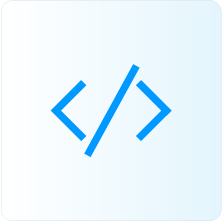
07 Low-Code + High-Code Support
Why It Matters
You need flexibility: low-code (drag & drop, form-based steps) for speed and accessibility, and high-code (scripts, modules, SDKs) for extensibility, and advanced logic. A platform that forces only one style becomes limiting.
Questions to Ask
- Can users compose workflows visually with minimal scripting?
- Can developers insert custom code or modules where needed?
- Is there reuse, templating, debugging, and version control across both modes?
 Itential Differentiator
Itential Differentiator
Itential offers a visual workflow builder with reusable templates plus the ability to embed custom code/modules. This hybrid approach supports both non-technical operators and deep engineering extension.

08 Security, Audit & Governance
Why It Matters
Powerful automation demands high trust. You must enforce access control, identity, secrets, policy enforcement, and immutable logs. Compliance rules, AI governance, and auditability must be baked in.
Questions to Ask
- Are all operations (user, API, agent) logged with identity, timestamp, version?
- Does the platform support RBAC, SSO/identity provider, MFA?
- How are secrets stored, rotated, and protected?
- Can you express policy/validation logic inside workflows?
 Itential Differentiator
Itential Differentiator
The Itential Platform supports fine-grained RBAC and audit logging. Every action, including those initiated by AI/agents via MCP, is subject to policy enforcement and captured in audit trails.
Itential’s compliance and security posture is part of its platform design, with encryption and identity integration baked in.

09 CI/CD, DevOps & Versioning
Why It Matters
Treat infrastructure templates and automation like code. You need version control, promotions, rollback, testing, and pipeline integration so workflows are governed, auditable, and safe.
Questions to Ask
- Can workflows be triggered via pipelines (northbound) and invoke pipelines (southbound)?
- Are workflows and policies versioned, tested, and have the ability to rollback?
- Do you support promotion, staging, and approval gates?
 Itential Differentiator
Itential Differentiator
Itential supports integration with CI/CD systems, versioned artifacts, staging/promotions, and rollback gating. Workflows and policies live with code practices, enabling safe infrastructure evolution.

10 Scalability & Resilience
Why It Matters
As you grow: more workflows, more infrastructure, more concurrency. The system must scale horizontally, handle failures with retries/fallbacks, and not bottleneck orchestration.
Questions to Ask
- How does it behave under node failures, high concurrency, or network partitions?
- Are retries, fallback, or failover mechanisms built in?
- Can orchestrations scale to large fleets without degradation?
 Itential Differentiator
Itential Differentiator
Itential’s distributed architecture supports high availability, redundancy, and partition tolerance. Components can be scaled horizontally, and workflows can retry or failover as needed to maintain reliability at scale.

11 Observability & Telemetry
Why It Matters
You can’t manage what you can’t see. Execution logs, metrics, traces, dashboards, and correlation to infrastructure state are essential for debugging, optimization, and compliance.
Questions to Ask
- Can workflow failures be traced to exact steps and versions?
- Are execution metrics (latency, error rate, throughput) exposed?
- Can orchestration state changes be correlated with infrastructure telemetry over time?
 Itential Differentiator
Itential Differentiator
Itential surfaces detailed logs and execution metrics. Lifecycle Manager retains property change history per instance, enabling traceability from orchestration events to infrastructure state.

12 Compliance, Standards & Certification
Why It Matters
Many enterprises operate under regulatory constraints (PCI, NIST, HIPAA) or internal mandates. Orchestration must help enforce policy, collect audit evidence, and demonstrate compliance.
Questions to Ask
- Can the tool generate compliance reports or artifacts?
- Is policy enforcement embedded into workflows?
- Does the vendor maintain any relevant certifications or third-party audits?
 Itential Differentiator
Itential Differentiator
Itential’s audit trails, policy enforcement via workflows (especially for AI/agent paths), and guardrail design support compliance goals. The platform’s security posture and logging create evidence you can present in audits.
Final Takeaways
This guide should provide both clarity and differentiation as you evaluate orchestration platforms.
The right orchestration platform is not about automating individual tasks – it’s about managing full services over their entire lifecycle, across domains, with visibility, trust, and flexibility. If a candidate tool can’t support provisioning, change, drift control, AI/agent triggers, and platform-grade governance (audit, identity, RBAC), then core risks – drift, fragmentation, lack of trust – will undermine your automation ambitions.
What to Prioritize
![]()
True network-first architecture that extends outward.
![]()
Instance state and lifecycle visibility
![]()
Built-in governance: audit, RBAC, SSO, secrets, encryption.
![]()
Safe AI/agentic execution, always pluggable to human oversight.
![]()
DevOps alignment, rollback, staged workflows.
![]()
Resilience, scalability, observability.

